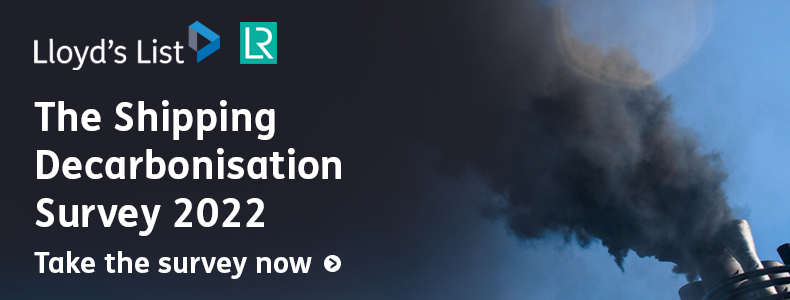Why shipping’s poor progress report requires high-level attention
Positive rhetoric from events such as the Global Maritime Forum and Climate Week mobilises energy, but it does not always unlock progress
Industry leaders will, once again, call on the industry to come together this week and set more ambitious targets, implement clear standards, and enforce stronger technical and market-based measures. But has the script changed since last year and is progress really being achieved in shipping’s energy transition?
THE shipping industry’s self-appointed coalition of the willing gather in New York this week for their annual confab.
The Global Maritime Forum has been timed to coincide with the United Nations’ general assembly and a series of high level climate events populated by senior global ministerial representatives.
The confluence of such high-level attention means that this week’s events will act as a progress report on the industry’s energy transition as studies are published and speeches are delivered amid furious back room lobbying efforts and diplomatic déjeuners.
But is there any progress to report?
The GMF’s annual survey of industry concerns — Global Maritime Issues Monitor — inevitably reflects the geopolitical tension fuelled by the situation in Ukraine, but the underlying decarbonisation challenge remains unchanged.
The latest modelling on achievable decarbonisation pathways set to be delivered by the Mærsk Mc-Kinney Møller Center for Zero Carbon Shipping shows that while zero carbon shipping by 2050 is still within reach, we are still very far from meeting the Paris 1.5°C trajectory.
It seems clear to everyone gathering in New York that the acceleration needed to move the shipping industry closer to the 1.5°C scenario will not happen using the regulation on carbon pricing or energy efficiency currently under discussion.
It will require unprecedented regulatory intervention, radical scaling of alternative fuel production and fleet readiness, disruptive technology inventions and substantial willingness to invest.
The GMF leaders will, once again, call on the industry to come together and set more ambitious targets, implement clear standards, and enforce stronger technical- and market-based measures. Policy makers must start sending unambiguous signals about regulation now to ensure timely investment in the required large-scale infrastructure developments, is roughly how the script will go.
But that script has not notably change since last year’s events.
There will be good news amid the notably sense déjà vu. Attendees can expect to be joined by a significantly inflated group of cargo interest executives this year as the push for collaboration across the value chain gathers pace with tangible results and commitments being unveiled.
Technology advancements will be showcased and the engine manufacturers due to launch methanol units and test ammonia ones by the end of the year will rightly argue that tangible progress is there to be seen.
The scale of these advancements, however, is still nowhere near where it needs to be to match the rhetoric with the reality of the net zero ambitions that are being touted by those companies that make up the GMF ranks.
Revolutions are of course chaotic, and the energy transition was never destined to be a linear affair. But there is a sense that some of the momentum has stalled.
An optimistic reading of this week’s progress report might argue that pockets of progress are perhaps the best we can expect during this foundation period of change.
We are, as an industry, too often guilty of painting this process as a simplistic transition, glossing over the myriad component parts of the processes that need to be aligned.
Infrastructure development needs to be politically agreed and publicly and privately financed. Supply chains need to be built, people need to be trained, health and safety needs to be embedded, regulations must be agreed and barriers removed.
Some of this is still conceptual, but the pragmatic reality of daily politics still lag behind. Governments that on the one hand use events like this week’s to announce green policy will block progress with contradictory responses from departments putting out smaller fires than the burning issue of climate change.
The positive rhetoric that emerges from events like GMF and Climate Week mobilises energy, but it doesn't always unlock progress.
No chief executive will stand up this week and concede that the mission is doomed, no matter how desperate his or her personal view may be.
But that does not mean that such weeks can be written off as mere cheerleading and greenwashing.
Progress reports help. There is value in the industry constantly checking itself against something that is a quantifiable milestone.
When the high-level climate champions launch their latest study today, they will revisit the progress made in the past 12 months on key transitional projects.
Some will be revealed to have stalled. Despite the abundance of rhetoric surrounding so-called ‘green corridors’, it seems there is an overwhelming lack of investment to match the enthusiasm and projections of explosive growth touted at last year’s event.
Revisiting the progress under the glare of industry scrutiny will no doubt be uncomfortable, but fixing the issues is a necessary part of the process.
In the case of the corridors, they will need the attending high-level government representatives to be convinced to put their hand in their pockets and fund at much higher levels than they are currently.
Having that discussion in the US — where public spending is being unleashed, notably with investment into hydrogen and hydrogen-derived energy products — will hopefully help set the right tone. After all, gathering the great and the good of public and private partners during these events is why they justified clocking up the air miles to attend these discussions on emissions.
This week’s industry progress report will no doubt disappoint those frustrated by the roadblocks yet to be removed. It will not change the unswerving optimism of executives committed to environmental, social and governance policies, however unachievable they are in reality.
It will, however offer an important opportunity to take a clear-eyed look at the issues that need to be resolved and accelerate the progress that is already under way.
The industry may be nowhere near meeting the Paris 1.5°C trajectory, but the fact that we are not ruling it out as unachievable should be taken as positive progress, of sorts.


